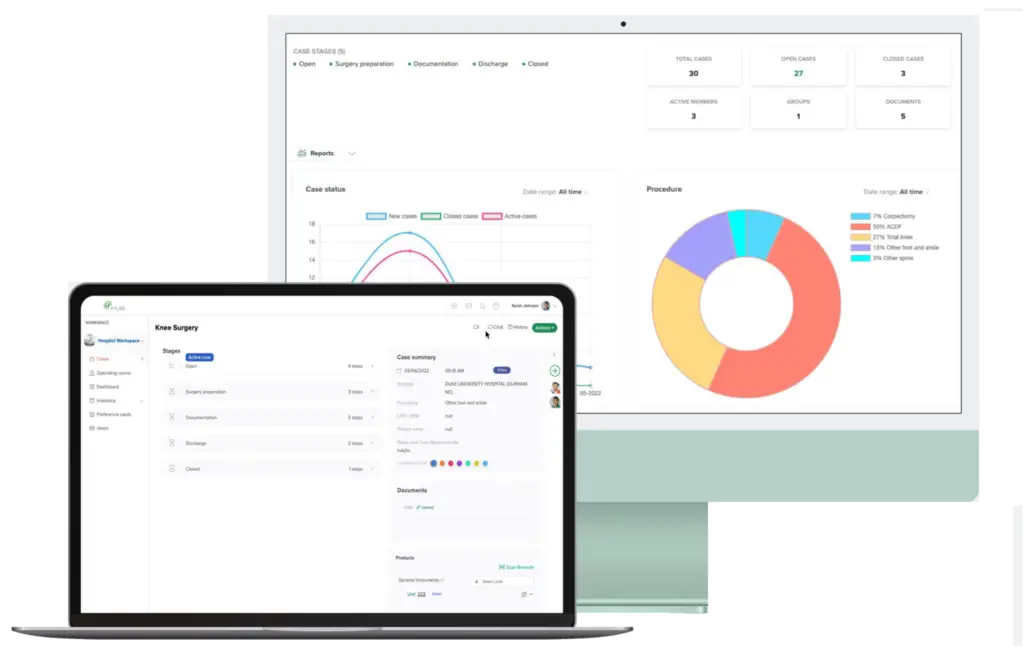A workflow is a series of steps or tasks that need to be completed to achieve a specific goal or outcome. In the healthcare industry, having a clearly defined workflow is crucial for success. It ensures that everyone is on the same page, tasks are completed efficiently, and goals are achieved in a timely manner. In this article, we will explore the importance of having a clearly defined workflow and how it can benefit your healthcare organization.

The Importance of a Clearly Defined Workflow
A clearly defined workflow is essential for any healthcare organization, regardless of its size or specialty. Here are some reasons why:
Workflow Optimization
Having a clearly defined workflow allows for optimization and streamlining of processes. By mapping out each step in a workflow, you can identify any inefficiencies or bottlenecks and make necessary adjustments to improve efficiency. For example, if a task is taking longer than expected, you can analyze the workflow and determine if there are unnecessary steps or if the task can be delegated to someone else. This not only saves time but also increases productivity and reduces the risk of errors, essential for effective care coordination.
Improved Communication and Collaboration
A clearly defined workflow ensures that everyone involved in patient care or administrative tasks is aware of their responsibilities and deadlines. This promotes effective communication in healthcare and collaboration among team members, leading to better results. When everyone knows what is expected of them, there is less room for confusion or misunderstandings. This also allows for better coordination between different departments or teams, leading to a more cohesive and efficient workflow.
Consistency and Standardization
A clearly defined workflow promotes consistency and standardization in processes. This is especially important for healthcare organizations with multiple teams or locations. By having a standardized workflow, you can ensure that tasks are completed in the same manner, regardless of who is responsible for them. This not only improves efficiency but also reduces the risk of errors or inconsistencies. It also makes it easier to train new employees, as they can follow the established workflow without confusion.
Increased Efficiency and Productivity
A clearly defined workflow leads to increased efficiency and productivity. By eliminating unnecessary steps and streamlining processes, tasks can be completed in less time, allowing for more work to be done in a day. This also reduces the risk of burnout and stress among employees, as they are not constantly overwhelmed with a heavy workload. With a clearly defined workflow, employees can focus on their tasks without worrying about what comes next or if they are missing any steps, crucial for maintaining high standards in integrated healthcare.
Better Time Management
A clearly defined workflow allows for better time management. By mapping out each step in a workflow, you can estimate how long each task will take and plan accordingly. This is especially important for projects with tight deadlines. With a clearly defined workflow, you can prioritize tasks and allocate time accordingly, ensuring that projects are completed on time and patients receive timely care.
How to Define Your Workflow
Now that we understand the importance of a clearly defined workflow, let’s explore how you can define your healthcare organization’s workflow.
Identify Your Goals
The first step in defining your workflow is to identify your goals. What do you want to achieve? What are the key objectives of your organization? This will help you determine the tasks and processes that need to be included in your workflow.
Map Out Your Processes
The next step is to map out your processes. This involves breaking down each task into smaller steps and identifying the dependencies between them. This will help you understand the flow of work and identify any inefficiencies or bottlenecks.
Assign Responsibilities and Deadlines
Once you have mapped out your processes, it’s important to assign responsibilities and deadlines to each task. This ensures that everyone knows what is expected of them and when their tasks need to be completed.
Use Workflow Management Tools
There are many workflow management tools available that can help you define and manage your workflow. These tools allow you to map out your processes, assign tasks and deadlines, and track progress. They also provide analytics and insights that can help you identify areas for improvement. Tools such as medical case management software and healthcare document management systems can be particularly useful in a healthcare setting.
Real-World Examples of Clearly Defined Workflows
Hospital Emergency Department
Hospital emergency departments have clearly defined workflows that allow them to triage, diagnose, and treat patients efficiently. Each step in the process is carefully mapped out, from patient intake to discharge. This workflow is optimized for efficiency, ensuring that patients receive timely and appropriate care.
Outpatient Clinics
Outpatient clinics rely on clearly defined workflows to ensure that appointments are scheduled, patients are seen promptly, and follow-up care is managed effectively. Tools like patient management software are commonly used to manage these workflows, allowing for seamless coordination and communication among healthcare providers.
Who is Responsible for Defining and Managing Workflows?
In most healthcare organizations, the responsibility of defining and managing workflows falls on the project manager or team leader. They are responsible for ensuring that tasks are completed efficiently and on time, and for making any necessary adjustments to the workflow. However, it’s important for all employees to be involved in the process of defining and managing workflows. This promotes a sense of ownership and accountability, leading to better results.
Conclusion
Having a clearly defined workflow is crucial for the success of any healthcare organization. It promotes efficiency, productivity, and collaboration, and allows for better time management and standardization of processes. By following the steps outlined in this article, you can define and optimize your organization’s workflow, leading to improved results and a more successful healthcare practice.
How HUB Healthcare Can Help
HUB Healthcare provides a comprehensive solution designed to enhance communication in healthcare, streamline care coordination, and improve overall workflow efficiency. Our platform includes features such as medical case management software, healthcare document management, and healthcare analytics to ensure that all aspects of patient care are optimized. By leveraging HUB Healthcare’s robust tools, organizations can reduce workflow bottlenecks, automate repetitive tasks, and facilitate better collaboration among healthcare providers. This not only improves work quality but also enhances patient outcomes, making HUB Healthcare an essential partner in achieving healthcare excellence. Visit our Help Center to learn more about optimizing your healthcare workflows.






